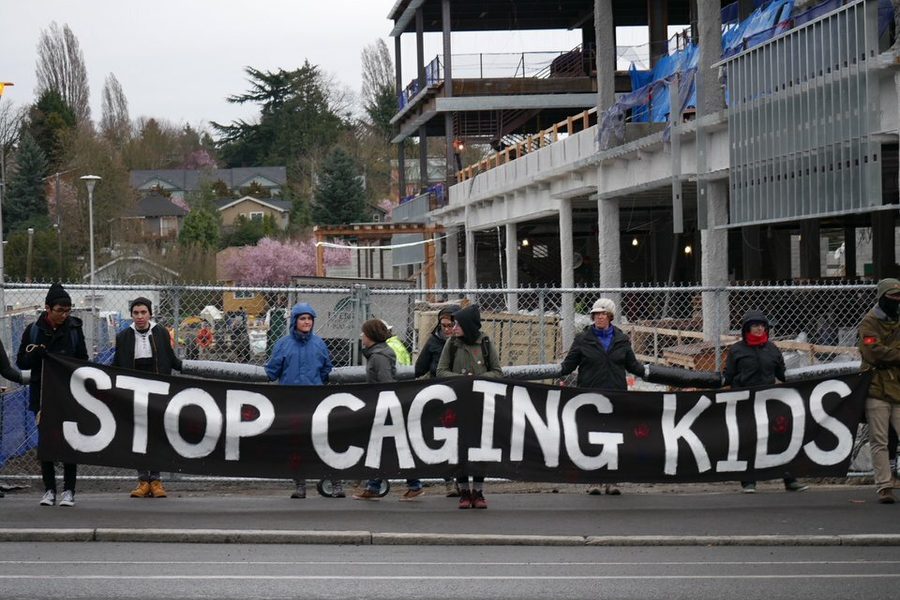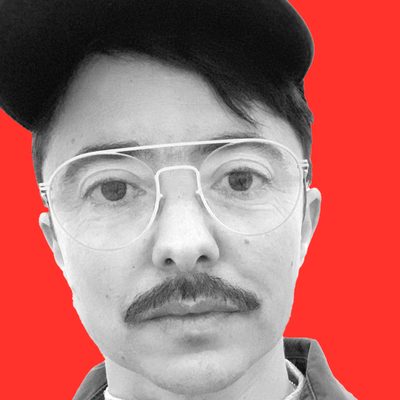How Politicians Are Using Faux Progressive Arguments to Lock Up Young People
For six years, Seattle activists battled with policymakers who are pushing for a costly new youth jail and court project.
Dean Spade

In Seattle, activists are entering the second month of a new stage of escalation in a six-year campaign against the estimated $225 million youth jail and court project being undertaken by King County. On March 19, the No New Youth Jail Coalition — which consists of more than 60 organizations working on issues related to poverty, racism and youth services — delivered a letter to King County Executive, Dow Constantine, the person who can stop the project. The letter from the Coalition, which I actively organize with, details the last six years of resistance, in which many different constituencies in the County and leading youth services organizations have come out against the project. It highlights the County’s attempts to avoid hearing feedback from constituents by canceling public events and changing the County Council rules to limit community participation in hearings. It asks why the County is continuing to rush this project to completion when a lawsuit has established that the tax levy funding the project is illegal, so that if the County does not win an appeal, the project will have to be paid for by the general fund and undermine key services and functions. The letter demands that Constantine declare a moratorium on building and negotiate with the community to repurpose the site and redirect resources toward human needs.
On March 26, given that Constantine had not declared a moratorium on building, the No New Youth Jail Coalition began the People’s Moratorium. Early that morning, activists locked down to block all three of the gates to the construction site to stop trucks from arriving with more construction supplies. The next morning, activists occupied the lobby of the County Office Building. Since then, the Coalition has been in constant action with banner drops, protests at the construction site and at Constantine’s public appearances, and media advocacy. On April 20, people of faith and clergy led a protest at the construction site that resulted in nine arrests: three people who had locked down to beams inside the site, and six people who were part of prayer at one of the gates.
The events in Seattle are part of broader local and national social movement work to halt investment in policing and imprisonment. In 2008, a coalition led by the homeless advocacy organization in Seattle defeated plans for a new $200 million adult jail. In 2016, anti-police activists defeated plans for a $149 million new police bunker in Seattle. In 2017, activists in Virginia won their fight against a new youth prison in Chesapeake. Activists in Richmond, Virginia are currently fighting against more plans for youth prison building. San Francisco anti-criminalization activists are similarly engaged in a struggle to stop a new jail from being built. Chicago activists are engaged in a campaign to stop the building of a $95 million police academy. Activists in Detroit are fighting against a $533 million criminal justice center. Even small towns, like Northampton, Massachusetts, are seeing residents rise up to oppose expansion of infrastructure for policing and criminalization. These campaigns and the many others emerging around the country are examples of how local activists are leveraging the anti-criminalization momentum created by the #BlackLivesMatter movement to demand new priorities for local governments.
Masquerading as progressive
The story of how politicians are justifying Seattle’s youth jail project with talking points about racial justice, progressivism and even “zero youth detention” is worth learning from. In King County and the City of Seattle, most politicians promote themselves as progressive, even though the City and County governments do many of the same things we see in any contemporary city: raid homeless encampments, arrest protesters, build up the cops and jails, court the tech industry and pander to real estate developers. When the plans for the new youth jail and court buildings were first announced, the talking points of the projects’ advocates focused primarily on how the youth jail needed to be replaced so that youth could have improved conditions for their jailing. Even though the current youth jail was built in 1992 and the County’s own studies say it is in “good condition,” the project’s promoters consistently framed it as decrepit and argued that anyone opposing the investment in a new jail was doing so at the expense of the well-being of youth. They made a Black County Council member with a history of activism, Larry Gossett, into the project’s spokesperson. For the first few years of the fight, some opponents were steered toward meetings with Gossett that were directed toward helping plan the new jail, supposedly in ways that would allay concerns. Over the years, Gossett has faded from the front lines, perhaps because using him as the face of the project stopped being an effective way to stem opposition.
Today, Constantine, the jail’s main advocate, continues to promote the new jail as good for the youth who will be caged in it, using methods that are increasingly sophisticated and concerning. Constantine is effectively deploying the talking points developed by decades of anti-criminalization advocacy in order to promote his jail-building. There is, of course, nothing new about jail and prison builders justifying their projects by saying they will be good for those caged inside them. This is the logic used to build prisons in the name of eliminating overcrowding, building “gender responsive” prisons, and implementing other innovations that expand the capacity to cage people. Constantine, however, is developing this framework in ways that are up-to-date with contemporary anti-criminalization strategies. In 2017, he announced that he has a goal of “zero youth detention” and appointed a staffer to lead the County’s “zero juvenile detention efforts.” In response to opposition to the youth jail, the City Council passed a “zero youth detention” resolution that is functionally only symbolic, but represented the significance of the pressure of the movement against the project. Constantine has now joined these talking points. County Council members have also distanced themselves from the project. Since the People’s Moratorium was declared, Constantine has further ramped up this tactic.
In an April 17 interview, Constantine argued that detention is traumatic for youth, causes recidivism, disrupts schooling and is a result of systemic racism. He said that the old facility is going to be replaced with a “therapeutic facility that will be less traumatizing for youth” and “help them get back on track.” He touted the County’s diversion programs. He argued that some day, when the goal of zero detention is achieved, the facility will be turned over for community programs. He argued that the County should move toward a model of a decentralized juvenile detention system centering highly trained social workers, only locking young people up in rare cases. During the recent ramping up of the campaign, he also officially transferred the youth jail facility into the control of the Department of Public Health, part of his reframing it as a health intervention.
The architecture of white supremacy
King County, Seattle and Constantine provide a useful study of how the architecture of white supremacy is expanding right now in the name of anti-racism. In the context of the Trump administration, it is even easier for politicians to promote themselves as social justice advocates and anti-racists while continuing to fund and build the infrastructure of state violence that anti-racist movements are fighting to dismantle. For example, in December 2016, Washington politicians, including Seattle’s Mayor, Constantine and others, held a press conference to declare Washington a “hate free state.” The politicians made speeches about their commitments to support Muslims, the LGBT community and others facing new threats with the rise of the Right. The cloak of fake progressivism is easier for politicians to put on to cover the reality of pro-criminalization and anti-poor actions when the point of comparison in Trump.
Jurisdictions like King County and Seattle, where social justice branding is nearly universal, demonstrate the cutting-edge versions of this strategy. The King County Prosecutor’s Office promotes its diversion programs nationally as models of progressivism in prosecution, and has recently expanded its staffing by employing prosecutors focused on restorative justice strategies. The Seattle Police Department launched a public relations campaign when it was under investigation by the Department of Justice in which it marketed a rainbow police badge sticker to be posted by businesses all over the City stating that they are a “safe place” and will call the cops for LGBT people facing harassment.
By spending relatively small sums on a few diversion programs and stickers, the City and County continue to expand their capacity to put the lion’s share of their budgets toward policing and imprisonment. At this point, 73 percent of the County’s budget is focused on “criminal justice and public safety.” Meanwhile, the famous diversion programs that police, prosecutors and politicians promote all still focus on legitimizing arrests of poor people and people of color. While basic needs like housing, transportation, healthcare, childcare, and education remain under-funded, a policing-centered approach to governance and spending is justified with a few “softer” options for what can be done with people after arrest. These same programs are lifted up by Constantine to justify the building of the youth jail. He argues that he is supporting such innovative programming, and is so dedicated to zero youth detention that building a new youth jail must be necessary or he would not be doing it. He mobilizes the language of trauma, therapy, systemic racism, alternatives to incarceration and restorative justice to promote a project that ensures ongoing caging of youth.
The fantasy of a therapeutic cage
In this context, it is particularly meaningful that activists are framing resistance in terms of prison abolition. Reforms that create “softer” punishment, diversion, or arrest-based programs — and are run by social workers and health providers — are being deployed by those focused on further investment in criminalizing infrastructure. Abolition is the framework that allows us to discern how progressive-sounding initiatives are actually expanding criminalization. The County funds “alternatives” and diversion programs, some of which are legitimate community-based programs, at small levels primarily to act as a fig leaf for their outrageous expenditures on policing and imprisonment. Constantine consistently argues that protesters from the No New Youth Jail Coalition refuse to dialogue with him. What he is experiencing is that the coalition refuses to partner with him on designing a jail. The coalition refuses to participate in the fantasy of a therapeutic cage, of a jail that would somehow work in partnership with non-profits that care about youth. Activists will not help develop talking points for justifying the disastrous decision to put hundreds of millions more dollars toward the travesty of youth imprisonment. The dialogue he wants, where members of the public collaborate under a shared fake-progressive banner to birth another project of jail and court-building, is one he is finding less and less partners to join.
What remains to be seen is how significant our impact has been in the County. Another city in King County, Tukwila, is now facing resistance to a new effort to build a police station and court buildings. Has the coalition’s six-year fight against the youth jail, the victory of a stalled police bunker project and the defeat of the adult jail project decreased the viability of more police, jail and prison infrastructure in our County? What will it take for the current crisis of legitimacy facing policing and imprisonment to move from providing rationales for expansion to actually establishing political conditions that stop expansion? Constantine and the King County Prosecutor’s Office are useful case studies for anti-criminalization movements right now. They are working to portray prosecution and jail-building as “social justice” projects, and are co-opting anti-racist and anti-law enforcement language and analysis with great sophistication to do so. Their tactics indicate one path through the legitimacy crisis for apparatuses of state violence — a path that cements and expands those apparatuses using new takes on the old themes of health and reconciliation. The #NoNewYouthJail campaign’s abolitionist praxis is a testing ground for the possibility of actually stopping the expansion of policing and imprisonment that has characterized the last 40 years.
Dean Spade is a professor at Seattle University School of Law. The second edition of his book, Normal Life: Administrative Violence, Critical Trans Politics and the Limits of Law was published by Duke University Press. His book Mutual Aid: Building Solidarity During This Crisis (and the next), was published by Verso Press. Find out more about his work at deanspade.net.








